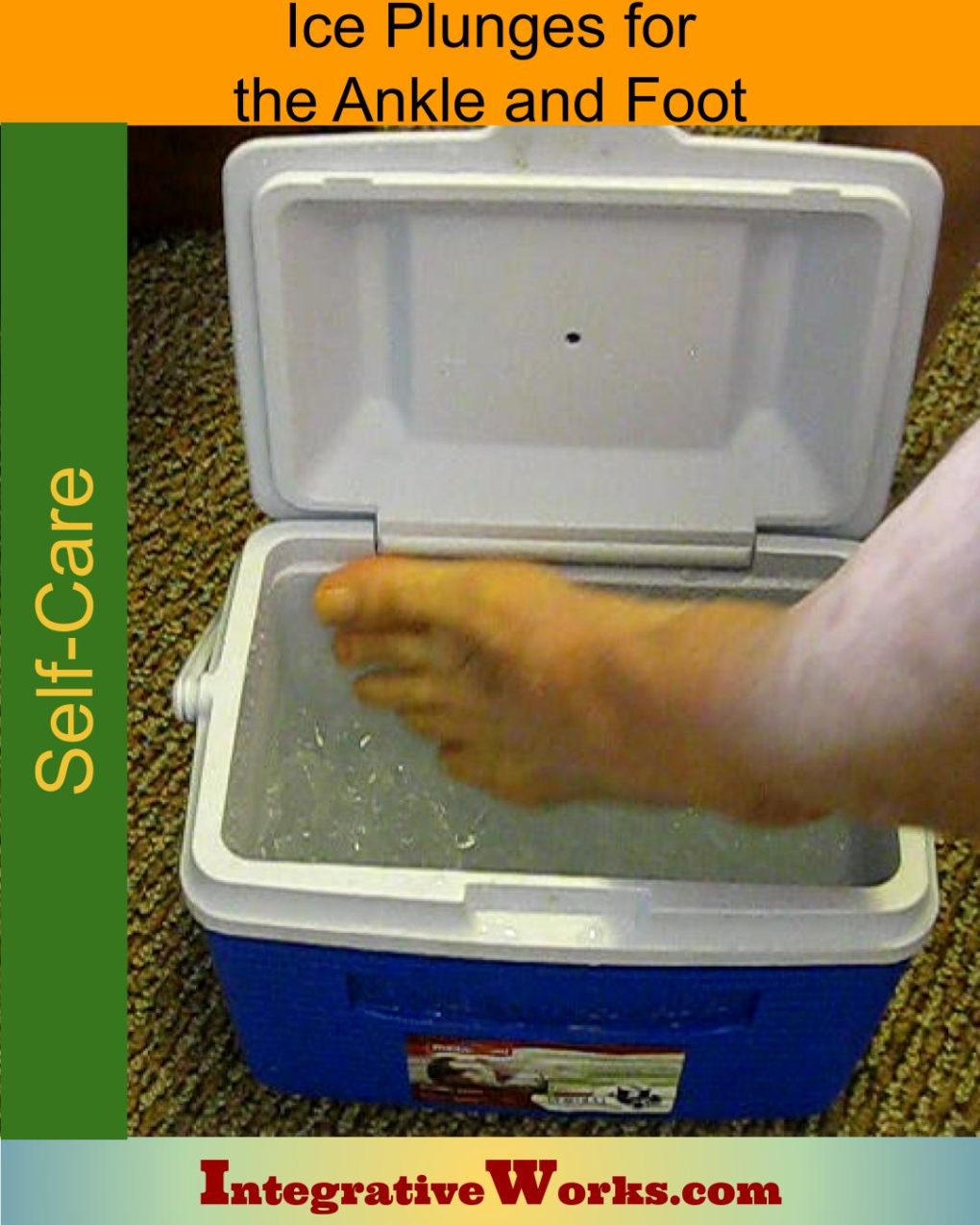This process is an amazingly effective therapy for sprains/strains and other trauma to connective tissue and joints. In addition, my clients, who are competitive athletes, find it one of the fastest ways to recover from injury. Clients that plunge once or twice a day for several days usually have fantastic progress and recovery. For example, training for a gold medal in rowing, one client plunged her ankle 6-7 times a day. Also, this can be great for wrist problems.
How It Works
The ice plunge creates an emergency in the area. Your body says, “Hey! It’s cold! I need to rush some blood in there, even the areas that don’t normally have good blood flow!”
Ever notice the white, tougher areas of steak? You know, like that white strip down the side of New York Strip. They are white because they don’t have good blood flow. This connective tissue is called fascia. Red meat is red because it has good blood flow. All the stabilizing connective tissues in your ankle and wrist are that same white stuff. When you strain a muscle, the connective tissue also tears. Ice plunges rush blood into those areas while compressing out waste material that stands in the way of faster healing. This kind of icing also compresses inflammation out of joints and helps them to tighten up.
The Basic Procedure.
- Fill a basin/cooler/bucket about 3/4 full with ice. Get a towel.
- Add just enough water to cover the ice and make it so that you can work your ankle/wrist into the ice.
- Keep it in there for up to 7 minutes or until it is numb, whichever is less.
- Let it cool naturally. Wrapping it in a towel will help to make it feel better.
Common errors.
People just don’t put enough ice in the basin because it feels too cold. People don’t get enough time because they don’t distract themselves and get too focused on the pain/cold. Some folks run their foot/hand under warm water to heat it afterward. The whole purpose of this is that your body rushes blood in there to reheat the area. Another problem is not getting far enough under the ice to cover the traumatized tissues, especially in a high sprain.
Cautions and Contraindications!
For some people, there are some good reasons that you should not do this. This process is safe for most people, but there are some contraindications.
- The common one is Raynaud’s Syndrome. In this condition, your hands and feet are chronically cold from poor circulation.
- Don’t plunge when you get hives from cold. The hives occur during the re-warming period and are a form of an allergic reaction to cold.
- Don’t do this if you get a rash, usually with itching, caused by exposure to cold. Cold Hemoglobinuria is a problem with the breakdown of red blood cells from cold and contraindicates plunges.
- Cold therapy should not be used when there is an area of numbness or altered sensitivity as the degree of cooling cannot be felt by the client.
- There are a few other unlikely contraindications. Consult your therapist or physician before doing these plunges to know if ice plunges are right for you.
This application of ice is very different from Ice and Stretch and is much more effective than using an ice pack for 20 minutes. However, don’t think that you’ll get the same effect from those. In most cases, you will want to use Ice and Stretch OR Ice Plunges but not both.
Helpful hints…
Provide distraction. I use sour gum, conversation, massaging other areas when I am doing this with clients. Eat spicy corn chips or watch hilarious comedy. Get someone to hang with you and support you while you do this. I also find that clients can stay in much longer if I call out the time every 15 seconds. Everyone wants out but wants to be tough enough to last another 15 seconds.
The Video
Here’s a video. By the way, I babble a little bit more than usual because the pain is pretty distracting, but I didn’t want to make this video 4-5 times like I usually do. You’ll notice that my foot is slightly red when I put it in because I did it for about 45 seconds on my first take but was too distracted and started over.

